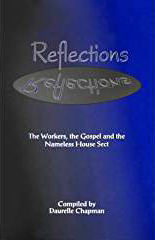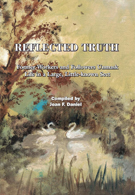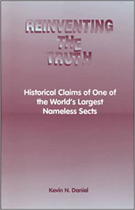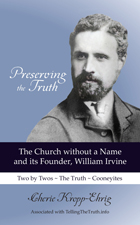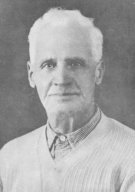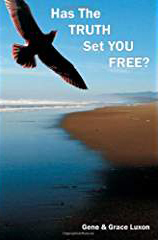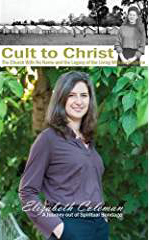THE IMPARTIAL REPORTER & FARMERS JOURNAL
The Impartial Reporter & Farmers Journal is the local weekly newspaper based in Enniskillen, Co. Fermanagh, Northern Ireland. It is the third oldest newspaper in Ireland, founded in 1825. Is name was later shortened to The Impartial Reporter. Founded, owned and operated for 181 years by the Trimble family, the proprietor in 1900 was William Copeland Trimble (aka W.C.T.).
This newspaper printed the earliest newspaper article found so far about Irvine's new Sect on January 15, 1903. This article and many more are posted on the website: TellingTheTruth.info>history>newspapers>old.
Their reporters attended and wrote numerous newspaper articles about the early Conventions, Missions, Workers and Friends and traced the development of the movement from the turn of the 20th century. The new sect began making headlines. Everything about this unusual new sect came under scrutiny: its lack of a name, its charismatic founder, its inexperienced, uneducated preachers, its missions, conventions, practices, teachings and its members' distinctive mode of dress. First appearing in rural villages and towns, the new sect soon gained a large following with most converts becoming roving missionaries.
The Impartial Reporter newspapernot only established that Irvine was the founder of this new sect, but also investigated his background, including his previous religious associations:
"William Irvine, the founder and supreme authority of what is known as Cooneyism, is a Scotchman. His native place is Kilsyth, a small town near Glasgow. Before he became a Tramp, he had attached himself to the sect known as the Faith Mission or Pilgrims and was the manager of a coal mine under Baird & Co., Glasgow … William Irvine left this employment and joined the Faith Mission"(Aug. 25, 1910, 8, TTT).
W. C. Trimble published a booklet about the new Sect titled The Tramps or Go-Preachers, 1910, (Sometimes called Pilgrims).
Perhaps Trimble's avid interest in Irvine's new sect was sparked when some of his family became actively involved in the new Sect. William Copeland Trimble (1851–1941) and Letitia Jane Weir (1854–1892) were married in Dublin on October 3, 1881, and had five children. Mrs. Trimble's brother was William Caldwell Weir, who embraced the faith along with his wife Susan. Three of their eleven children became Workers (Irvine, Harry and Edith). They were a prominent Irish 2x2 family; the very first Sunday Fellowship Meeting was held in their home at 21 Upper Baggot Street in Dublin.
Interested parties, including the author, Cherie Kropp-Ehrig in 2004, have made pilgrimages back to Ireland where many Workers hailed from and have visited the Impartial Reporter office. While they no longer allow the public access to their fragile archives, the articles are available at the British Library in London, England.
In June 2006, The Impartial Reporter, was bought by Ulster News Group, a wholly owned subsidiary of the Dunfermine Press Ltd. Visit their website.
The sheer magnitude of data available from this period, from a variety of sources, provides a comprehensive picture of the birth of this fledging Movement. The new Sect was big news and was covered by reporters from many other media organizations, resulting in articles in literally hundreds of newspapers worldwide during the first twenty years of the 2x2 Sect. Was the coverage unreasonably biased or skewed?
Some proponents of the Sect have asserted that newspapers such as the Impartial Reporter printed false statements and limited viewpoints. They scoff at the name of the newspaper, The Impartial Reporter, and claim it was actually the opposite, i.e. partial and biased against the 2x2 Sect.
Newspapers were required to observe the British laws regarding their content or they risked being sued. Previously, British law set out punishments for defamatory statements. By the 17th century, statements in writing (libelous) were dealt with more harshly than spoken (slanderous) statements. British law increasingly expanded the definition of defamation beyond that of other nations by including not only physical and financial injuries, but also statements which damaged reputations. Because of the legal ramifications, newspapers in the early 20th century were careful to verify the facts, connotations, implications and sources used for their statements. When they erred, typically, they hastily printed retractions.
It is worth noting that some of the newspaper articles were quite complimentary. Furthermore, the early 2x2 members were not shy about writing Letters to the Editor to express differing opinions or provide explanations, and some of these were published in subsequent newspapers. Criticisms were often based upon the group's claims and proclamations, with news articles including direct quotations from the 2x2 Preachers and followers.
PRIMARY SOURCES OF HISTORICAL INFORMATION: Today, over a hundred years later, there are no primary witnesses alive to testify in person about the start of this new movement. Primary sources provide first-hand testimony or direct evidence concerning a topic. They may be witnesses or recorders who were present and experienced the events being documented.
Some types of primary materials include diaries, journals, speeches, interviews, letters, memoirs, manuscripts, photographs, autobiographies, recordings, published materials (books, magazines, newspaper articles), official records of the government or organizations, court cases, ship manifests, etc. Primary sources enable researchers to determine as closely as possible what actually took place during a historical time period by revealing insights into the genesis of the group’s unique practices, as well as how they were regarded by the wider community.
These have enabled researchers, including the writer, to trace the early development of the movement from the turn of the 20th century, but no earlier. Until Wm. Irvine was expelled, no attempt had been made in the UK to conceal the new movement's recent start-up or Founder.
The Impartial Reporter & Farmers Journal is a valuable primary source.
Currently, in general, 2x2 Sect members have an ahistorical attitude—they are not concerned with the history or development of their church and many are by choice or circumstance, historically ignorant of its origins. Regardless of the voluminous and broadly consistent amount of information available from their early period, some 2x2 Sect leaders have claimed, and some still claim, that the history of the Sect is not traceable. Yet, they have not presented any documentary evidence contradicting the numerous, first-hand descriptions and claims made in the newspapers of the era and those written by other eye-witnesses and early Friends and Workers.

 REPRESENTING THE LARGEST COLLECTION OF 2X2 HISTORICAL DOCUMENTS ON THE INTERNET
REPRESENTING THE LARGEST COLLECTION OF 2X2 HISTORICAL DOCUMENTS ON THE INTERNET
 Perry, Oklahoma Conv, 1942
Perry, Oklahoma Conv, 1942
